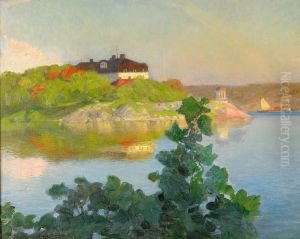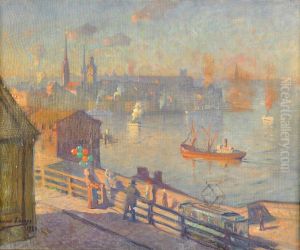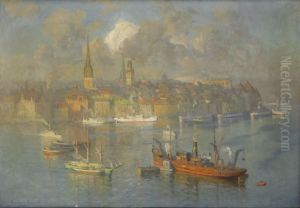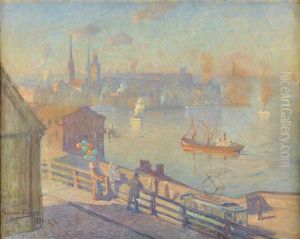Gunnar Lampa Paintings
Gunnar Lampa was a Swedish artist and sculptor born on June 8, 1904, in Stockholm, Sweden. His work is not widely known internationally, but he made contributions to the Swedish art scene, particularly in the early to mid-20th century. Lampa's artistic journey began with his studies at the Royal Swedish Academy of Arts (Kungliga Konsthögskolan) in Stockholm, where he honed his skills in both painting and sculpture.
During the 1920s and 1930s, Lampa's style evolved as he experimented with various artistic movements of the time. He was influenced by modernism and was known to have dabbled in both expressionism and surrealism. His work included both figurative and abstract elements, and he often explored themes of human emotion and existentialism through his sculptures and paintings.
Despite facing the challenges of the Second World War and the shifting landscape of the art world during his career, Lampa continued to produce works that were reflective of his personal vision. He exhibited his art in various galleries in Sweden, and his sculptures, in particular, were appreciated for their unique style and craftsmanship.
Gunnar Lampa's life was cut short when he passed away on November 4, 1959, in Stockholm. His legacy as an artist remains in Sweden, where his works are still studied and appreciated by those with an interest in the progression of Swedish modern art. While he may not have achieved the same level of fame as some of his contemporaries, Lampa's dedication to his craft and his contributions to the Swedish art scene have ensured that he is remembered as a significant figure in the country's artistic history.



